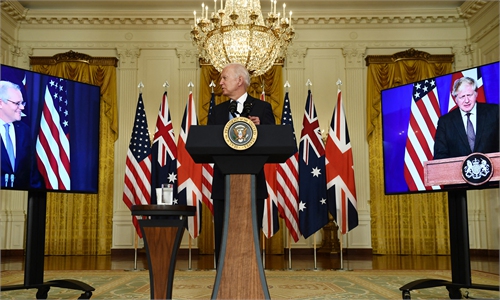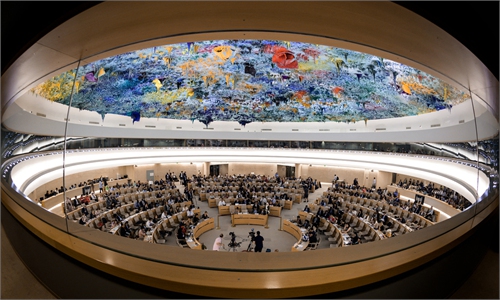Rare Australia earthquake triggers panic

An undated handout photo made available by Global Finprint on July 22, 2020 shows a Grey Reef Shark in Australia. An unprecedented survey of coral reefs worldwide has revealed a shocking decline in the numbers of sharks. Photo:VCG
A rare quake rattled southeastern Australia early Wednesday, shaking buildings, knocking down walls and sending panicked Melbourne residents running into the streets.The shallow tremor hit east of the country's second-largest city just after 9 am local time and was felt hundreds of kilometers away. The US Geological Survey put the magnitude of the quake at 5.8, later revised up to 5.9, and said it struck at a depth of 10 kilometers.
With Melbourne beginning its eighth week of pandemic lockdown and bracing for a third straight day of violent anti-vaccine protests, most residents were at home when the quake struck. Zume Phim, 33, owner of Melbourne's Oppen cafe, said he rushed onto the street when the temblor hit.
"The whole building was shaking. All the windows, the glass, was shaking - like a wave of shaking," he told AFP.
"I have never experienced that before. It was a little bit scary." In a popular shopping area around Melbourne's Chapel Street, masonry debris tumbled from buildings and littered the roads.
Bricks and rubble surrounded Betty's Burgers and large sheets of metal hung off the restaurant awning.
"We were fortunate that nobody was in the restaurant at the time," the restaurant said in a Facebook post.
Sizable earthquakes are unusual in Australia.
"It was quite violent but everyone was kind of in shock," Melbourne cafe worker Parker Mayo, 30, told AFP.
At magnitude 5.9, this was "the biggest event in southeast Australia for a long time," Mike Sandiford, a geologist at the University of Melbourne told AFP.
"We had some very big ones at magnitude six in the late 1800s, though precise magnitudes are not well known."
A quake of this size is expected every "10-20 years in southeast Australia, the last was Thorpdale in 2012," he said. "This is significantly bigger."
Geoscience Australia reported the initial quake was followed by a series of four smaller ones, ranging from magnitude 2.5 to 4.1.
Sandiford said Australians should expect "many hundreds of aftershocks, most below human sensitivity threshold, but probably a dozen or more that will be felt at least nearby."
The quake "would have caused many billions of dollars in damage had it been under Melbourne," he added.
The mayor of Mansfield, near the quake epicenter, said there was no damage in the small town but it had taken residents by surprise.
"I was sitting down at work at my desk and I needed to run outside. It took me a while to work out what it was," Mark Holcombe said.



